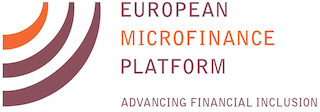 A panel of microfinance luminaries shared their moments of pride and disappointment at the closing plenary of this year’s European Microfinance Week. Yannick Milev of the Cambodian microfinance institution Chamroeun expressed his admiration for the staff members of Chamroeun, who continued to work through the COVID-19 pandemic at significant risk to their and their families’ health because “stopping operations completely would have had a terrible effect on us and on our clients.” Mr Milev added that Chamroeun issued many loans during the early days of the pandemic to help clients diversify in response to the economic effects of COVID-19.
A panel of microfinance luminaries shared their moments of pride and disappointment at the closing plenary of this year’s European Microfinance Week. Yannick Milev of the Cambodian microfinance institution Chamroeun expressed his admiration for the staff members of Chamroeun, who continued to work through the COVID-19 pandemic at significant risk to their and their families’ health because “stopping operations completely would have had a terrible effect on us and on our clients.” Mr Milev added that Chamroeun issued many loans during the early days of the pandemic to help clients diversify in response to the economic effects of COVID-19.
Marc Labie of Belgium’s University of Mons described the pandemic as “a chance for the industry to
